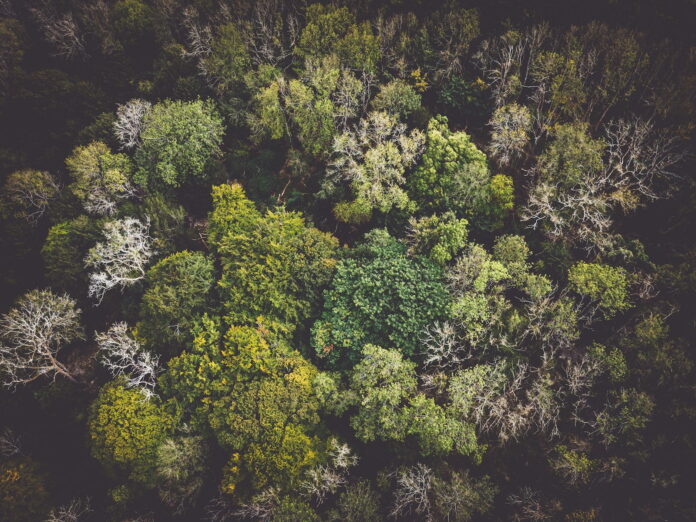In the face of escalating climate change impacts, urban forests emerge as a critical component in enhancing the resilience of city landscapes. They serve as a natural bulwark against the environmental challenges that accompany urban development. In this exploration of urban forests and their significance, we delve into what urban forests entail, the myriad benefits they offer as part of the urban canopy, and the strategies for integrating green infrastructure within the concrete jungle. As cities continue to expand, understanding and embracing the role of urban forests could be instrumental in forging a sustainable future that is both livable and adaptable to the climatic changes of our era.
Urban Forests Explained
Urban forests are clusters of trees and vegetation that are integrated within urban environments, encompassing street trees, park woodlands, gardens, and green spaces that collectively form the green infrastructure of a city. Unlike rural forests, urban forests are specifically designed, managed, and integrated into the cityscape to provide environmental, social, and economic benefits to urban populations. They are a dynamic ecosystem that interacts with the built environment and its inhabitants, evolving with the growth and changes of the city.
These forests play a crucial role in improving urban biodiversity, creating habitats for various species within the city limits. Additionally, urban forests contribute to the ecological network, facilitating the movement and interaction of species across an otherwise fragmented landscape. They are not just isolated patches of greenery but are part of a larger, interconnected system that spans across the urban fabric.
The management of urban forests is a complex task that involves various stakeholders, including city planners, environmentalists, community groups, and policymakers. It requires careful planning and sustained efforts to ensure these green spaces thrive amidst the urban pressures of pollution, land use change, and resource competition. Urban forestry thus becomes a multifaceted discipline, blending ecology, social science, and urban planning to cultivate and maintain these vital green lungs within the city.
Benefits of Urban Canopies
Urban canopies, composed of the layered cover of tree crowns in a city, provide a multitude of benefits that are essential for a healthy urban environment. One of the most immediate benefits is the enhancement of air quality. Trees absorb pollutants and carbon dioxide, producing oxygen in return, which helps to mitigate the urban heat island effect – a phenomenon where urban regions experience higher temperatures than their rural surroundings. This not only improves overall air quality but also reduces the demand for energy used in cooling buildings.
Furthermore, urban canopies offer a natural form of stormwater management. Through interception, trees reduce the volume of rainfall that reaches the ground, thereby decreasing runoff and the potential for flooding. Their root systems increase soil permeability, allowing for better water infiltration and reducing the strain on urban drainage systems. In addition, the presence of trees in urban areas has been linked with improved mental health and wellbeing, offering residents a reprieve from the hustle and bustle of city life and providing spaces for recreation and social interaction.
The economic benefits of urban canopies cannot be understated. They contribute to energy savings by providing shade and cooling, which can significantly reduce air conditioning costs in the summer months. Properties in well-treed neighborhoods often see an increase in value, and commercial areas with attractive tree-lined streets can experience a boost in business as shoppers prefer and linger in these visually appealing environments. Urban canopies are a long-term investment in the urban landscape, yielding returns across various sectors of city life.
Implementing Green Infrastructure
Implementing green infrastructure in urban areas is a strategic approach to incorporating natural systems into the built environment. It involves a shift from traditional gray infrastructure – like concrete and steel – to a more sustainable design that includes green roofs, permeable pavements, parks, and street trees. Green infrastructure serves to create a more resilient urban ecosystem capable of responding to the challenges posed by climate change, such as extreme weather events and rising temperatures.
To successfully implement green infrastructure, cities must adopt holistic planning and design practices that integrate green spaces at multiple scales – from the micro-level of individual buildings to the macro-level of citywide networks. This requires collaboration across disciplines and sectors, engaging urban planners, architects, engineers, environmentalists, and the community at large. Public policies and incentives can encourage the development of green infrastructure, ensuring that it becomes an integral part of urban growth and regeneration.
Education and community involvement are key components in the successful implementation of green infrastructure. By raising awareness of the benefits of urban forests and green spaces, residents can become active participants in the creation and maintenance of these areas. Community-driven initiatives often result in more sustainable and locally adapted solutions. Moreover, the integration of green infrastructure provides opportunities for green jobs and skills training, contributing to the social and economic vitality of urban communities.
Urban forests stand as a testament to the symbiosis that can be achieved between nature and urban development. They offer a comprehensive suite of benefits that enhance the quality of life for city dwellers while providing essential ecological functions. The implementation of green infrastructure is a forward-thinking solution that embeds resilience into the heart of our cities, preparing them for the challenges of climate change. As urban areas continue to grow, the integration of these natural systems will not only be a matter of aesthetic improvement but a fundamental aspect of sustainable urban planning. Embracing the potential of urban forests and green infrastructure is a step towards creating more resilient, healthy, and vibrant cities for current and future generations.
